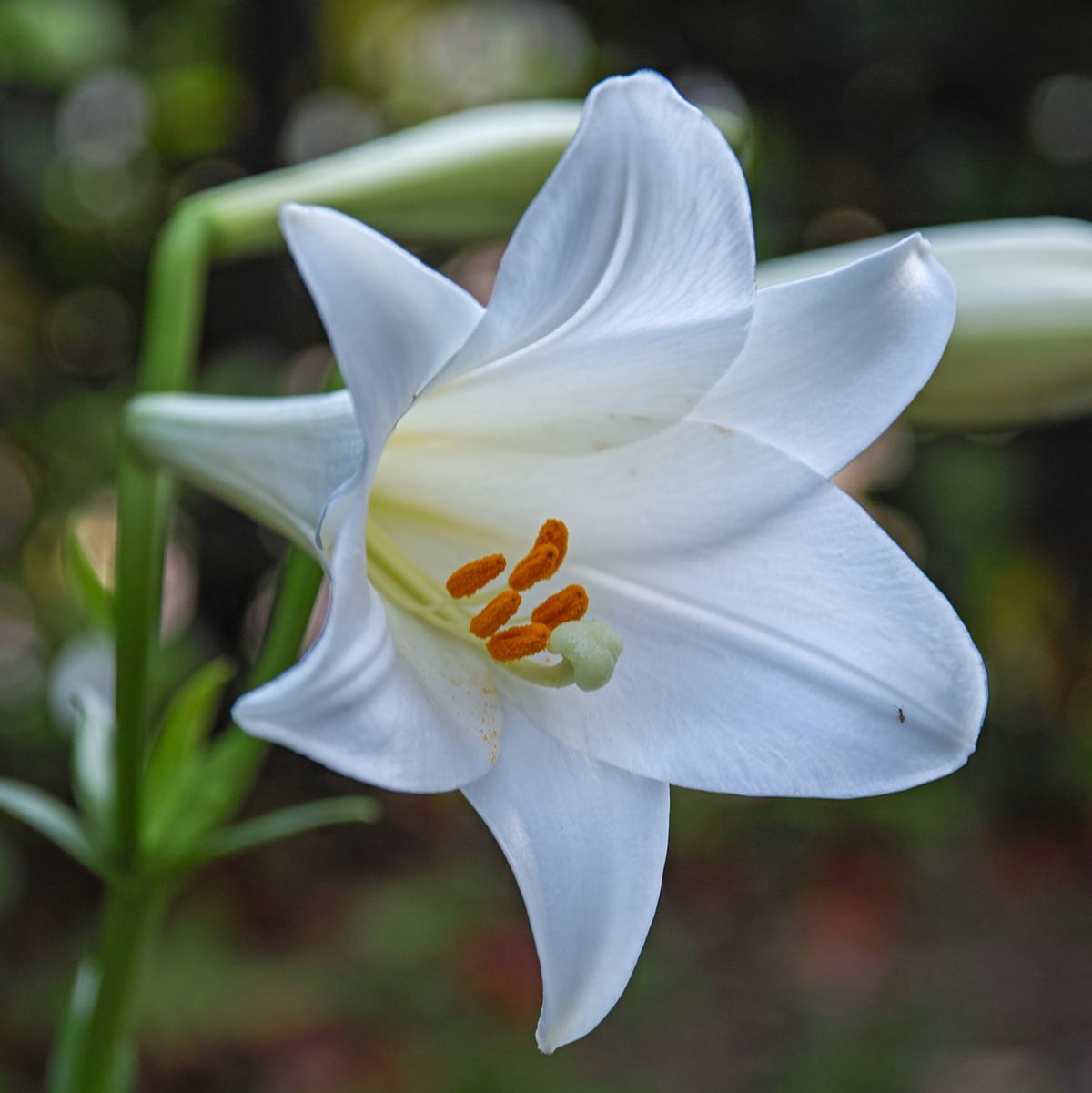The season that's most closely associated with growth and a renewed sense of hope and energy is, of course, spring. Not only does this time of year represent a rebirth of nature, with flowers and plants finally starting to bloom after months of winter, but it's also when Easter takes place. Yes, there's a good reason why all those pastel Easter colors mirror the shades of newly sprouted spring blooms! Christians who celebrate know that Easter is a holiday that rejoices in rebirth, too: It's centered around the resurrection of Christ — and that's why it's so fitting that spring flowers are associated with both the season and the holiday.
That brings us to the most famous Easter flower of all: the Easter lily. Whether you have them growing in your garden or you appreciate picking up a potted plant once the holiday draws near, learning how to take care of the delicate (and beautiful) flower requires a few helpful tips from the experts. As Experiential & Workshops Manager of the Midwestern floral studio Flowers for Dreams Carrie Waggoner explains, taking care of an Easter lily can be a little tricky. But with some patience and focus, you can make your Easter lily thrive.
What Is an Easter Lily?
"The Easter lily, or Lilium longiflorum, with its beautiful white trumpet-shaped flowers, has long been a symbol of purity and rebirth," Waggoner explains, noting that the perennial bulbs are cultivated specifically for Easter, i.e. forced to bloom for about two weeks in March or April.
More From Woman's Day

"We can trace lilies from their native origin in the Ryukyu Islands of Japan, to the Bermuda Islands, and finally to what is now known as the 'Easter Lily Capital of the World,'" Waggoner says. Where is that exactly? Well, it's located in a small stretch of land along the coast of northern California and southern Oregon, Waggoner explains.
This means that during Easter season, it's quite easy to find Easter lilies most places that flowers are sold across the U.S., no matter what part of the country you call home.
How to Choose Easter Lilies
Though it might be tempting to choose an Easter lily with as many blooms as possible, a better plan of action is to choose one that has both new buds and fresh blooms, if you can. Gardening experts say this means it will continue to thrive once the current blooms are done growing.
How to Care for Your Potted Easter Lily Indoors
If you're purchasing a pre-potted Easter lily, they can last for a long time with the right indoor placement, care, and management.
☀️ Light
"Your lily will enjoy cool daytime temperatures around 60-68° F, with a slight drop in temperature of around 5° at night," Waggoner says. "Avoid placing it near drafts or a heating vent."
When finding the right spot for your Easter Lily indoors, Waggoner suggests opting for a perch that's out of direct sunlight, but still receives a good amount of bright, indirect sunlight, like a North- or East-facing window, to avoid wilting. Turn the pot every two days.
👨🏼🌾 Soil
When you first receive a potted Easter lily, it's important to remove it from its decorative foil wrapping to keep it blooming for as long as possible, says Waggoner. Otherwise, it can remain water-logged and can be prone to root rot. Then, you'll want to aim to keep the soil moist but not soggy.
💦 Water
"Check your plant at least once a week and water when the top two inches of soil are dry to the touch," Waggoner suggests, noting that it's very important to never (ever!) leave the lily in standing water or to make the soil overly moist.
Note: Easter lilies are poisonous to cats and dogs, so you may want to skip these blooms if you have pets in the house.
How to Transfer Easter Lilies Outdoors
Because Easter lilies thrive in both mild and warm temperatures, it is tough to grow Easter lilies outside if you live somewhere where it's cold in March or April. Easter lilies do best in a temperatures of 60-68° F, meaning they are more of an indoor plant in most places across the country during early spring months. However, you can re-home your Easter lily to the garden when it gets warmer and there's no danger of frost, says Waggoner.
First, wait until the flowers have finished blooming and prune any dead blooms. Then, select an area with indirect sunlight, and plant the lily's bulb roots down, a few inches below the surface of your well-drained soil. Cut back the leaves once they begin to brown, keep it well-watered, and you can likely expect another bloom come summer.
How to Keep Your Lilies Blooming
For both indoor and outdoor Easter lilies, trimming back blooms is a great way to promote new blooms and growth. "When the petals have opened, remove the anthers from the stamen in the center of the plant before the pollen blooms to keep your home clean and your petals looking their best," Waggoner says, explaining that removing the "spent blooms" encourages new growth.
Olivia Muenter is a freelance writer and former fashion and beauty editor who writes about fashion, beauty, lifestyle, relationships, travel, home decor, and more for Woman's Day and beyond. Her work has appeared in Bustle, Refinery 29, Glamour, Byrdie, Apartment Therapy, Philadelphia Magazine, and more. When she's not reading (or talking about reading on Bad on Paper, the bookish podcast she co-hosts), you can find Olivia working on her first novel, curating the perfect playlist, or shopping online.












